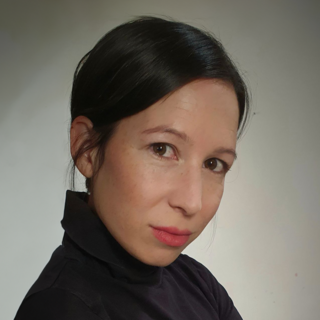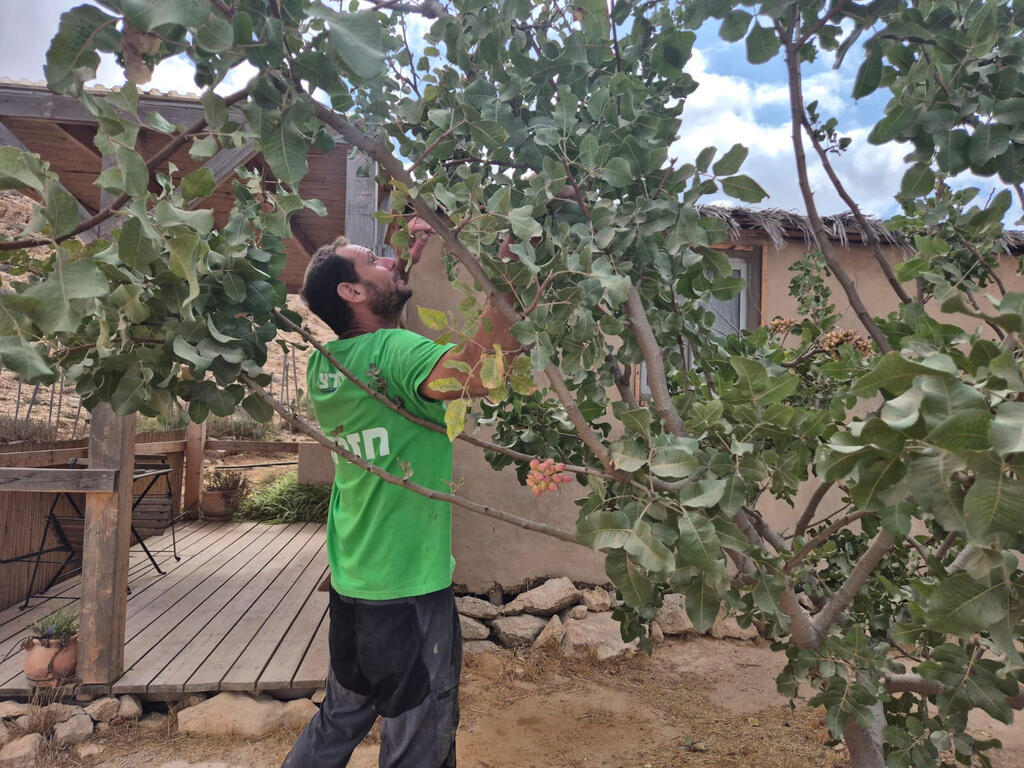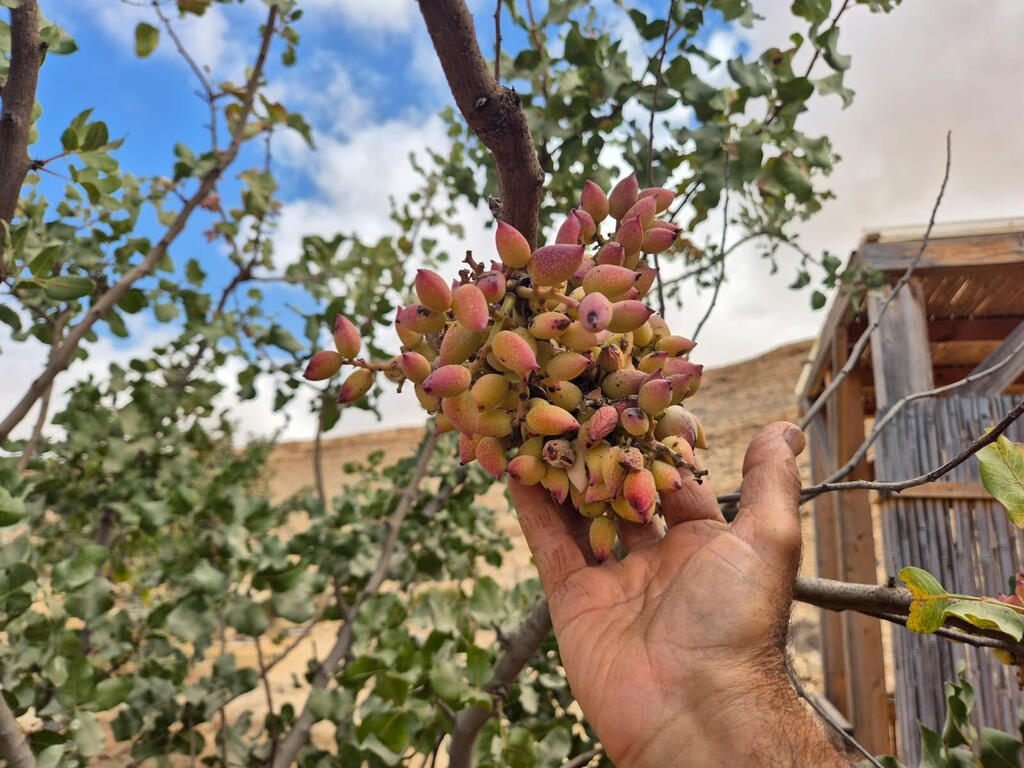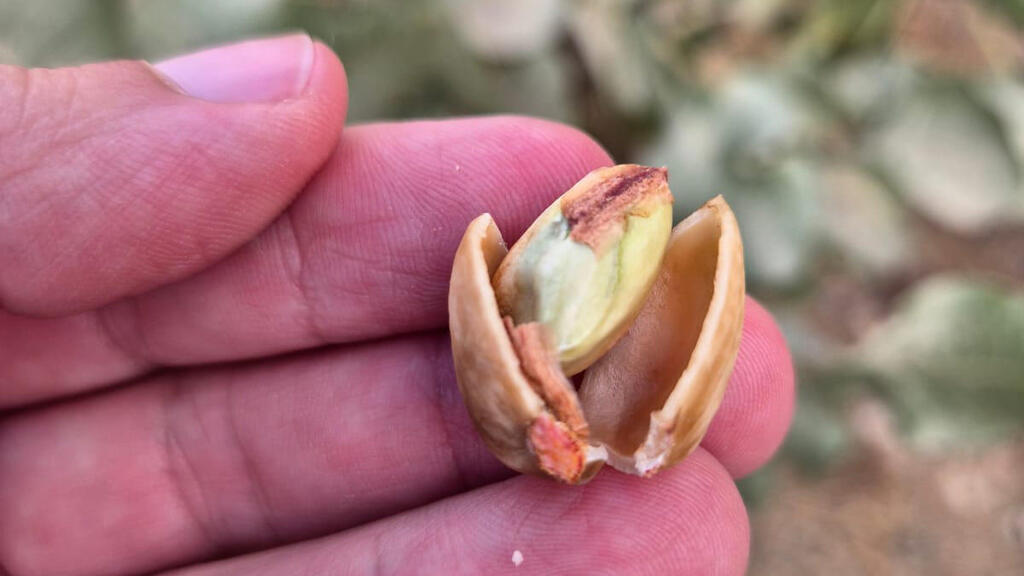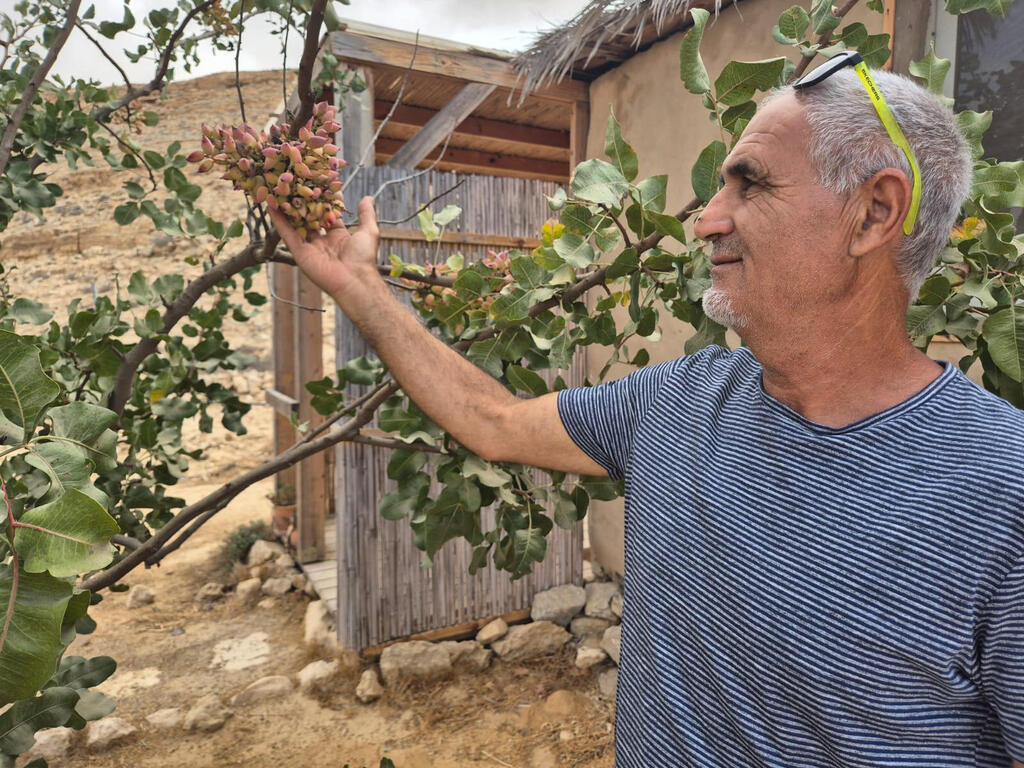In Israel's Negev Desert, a new answer to the Iran-led so-called “Axis of Resistance” is taking root: for the first time, two pistachio trees at the Mashkit farm near Mitzpe Ramon have yielded a full, edible crop.
Pistachio farming is highly profitable due to the high consumer demand, and local agricultural researchers hope the Negev will become Israel's primary pistachio supplier.
The harvest comes after 40 pistachio trees were recently planted at the farm, and researchers at the Ramat Negev R&D center are optimistic about the region's potential. The project is led by Elisha Tzurgil of Kibbutz Sde Boker, who has been working to establish pistachio farming in the Negev.
"This is his life's work," said Ya’ankale Moskowitz, head of the R&D center. "This year, the trees produced their first crop, and we enjoyed fresh pistachios straight from the clusters." Other farms in the Negev, including Eshkolot and Shizaf, have also planted pistachio trees, with additional saplings set to be planted this year in hopes of significant future yields.
Moskowitz added that pistachios offer a direct challenge to Iran, the world's largest pistachio producer. "Iran is a major grower, along with Syria, but we want to boost pistachio farming here in the Negev," he said. "The crop thrives in the higher, cooler parts of the desert, as pistachios require cold temperatures. We believe it could become a major industry around Mitzpe Ramon."
Pistachio farming is not limited to the Middle East; the crop is also cultivated in Greece, Italy and the U.S., with Iran and the U.S. accounting for about 70% of global pistachio production. The Israeli experiment in pistachio cultivation began in the Negev in recent years, following failed attempts in the 1980s.
Tzurgil recalled that the first pistachio plot was planted in Sde Boker in 1983, as Israel shifted away from labor-intensive crops like apricots, peaches and plums. "We wanted to explore pistachios, but they need a lot of cold," he said. "The winters in Sde Boker weren't cold enough, and the pistachios didn’t open. It wasn't viable."
Itzik David, head of orchard trials at Ramat Negev R&D, explained that pistachio cultivation had struggled due to inadequate cold temperatures. "In Sde Boker, the winters weren’t cold enough, and the pistachios didn’t crack open. It wasn’t economical," David said, noting that pistachios are now grown in Europe, Iran and Turkey. "We mainly import pistachios from Turkey, but we hope to grow enough here to avoid importing from ‘Axis of Evil’ countries," he added with a smile.
Tzurgil remains cautious, noting that pistachio farming in Israel is still in its early stages. "For the first time, a pair of trees at the Mashkit farm produced a full, edible crop," he said. He highlighted California as the world leader in pistachio production, adding that a leading scientist from the U.S. recently visited Israel to advise on local efforts. "We’ve even used rootstock from California, which offers early yields and larger crops."
Pistachio farming efforts in northern Israel were halted in 2016 when funding ran out, but new plans are underway to plant a fresh crop in the Golan Heights, backed by the Jewish National Fund (JNF).


